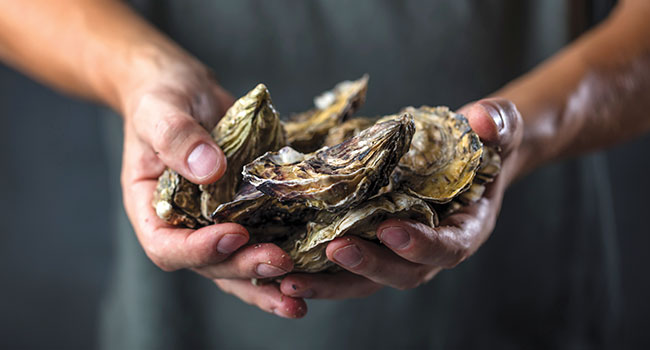
Researchers look to RAS to climate-proof oyster culture
February 11, 2022
By
Liza Mayer
 Photo:
© karepa / Adobe Stock
Photo:
© karepa / Adobe Stock As the effects of climate change bite deeper, research is underway to explore the potential of recirculating aquaculture systems in climate-proofing oyster culture.
The initiative is a collaboration between industry and academics aiming to break the dependence of oyster culture on unpredictable seawater quality.
Michael Congrove, president and majority shareholder at Oyster Seed Holdings in Mathews County, VA, is the private-sector participant in the project. He and experts from the Virginia Institute of Marine Science (VIMS) and the Virginia Tech Seafood Agricultural Research and Extension Center are now exploring the potential benefits of RAS technology in the early part of the oyster larvae’s life cycle.
“It would be ideal to run (the hatchery) on ambient water part of the time and then switch to recirculating system when that water became sub-par for producing larvae,” says Congrove.
He recalled that Chesapeake Bay’s water salinity has gone down to detrimental levels because of unusually heavy downpours in 2018 and 2019. While oyster hatcheries have become very good at solving water-quality issues with the use of traditional single-pass filtration type methods, those climate events made them helpless, he says.
“We couldn’t adapt a way to put enough salt back into the water to stay at our normal scale of production.” Not to mention all that freshwater brings all kinds of upland runoff and associated pollution into the watershed.
While salmon farmers already know the weak points in a RAS system and are addressing them, Congrove says there are still many unknowns in using the system in oyster larvae culture. As he and the team continue to figure out these unknowns, he underscores the importance of collaboration between industry and academics as well as financial support for such transformative initiatives.
“The good thing about an industry-driven grant program is it reflects how important a research question is to Industry,” he says.
The study is funded by the Virginia Sea Grant Fisheries Resource Grant.
Advertisement
- Semi-closed system to be installed at Grieg Seafood BC
- Analytics, genetics tech chart new direction for aquaculture





